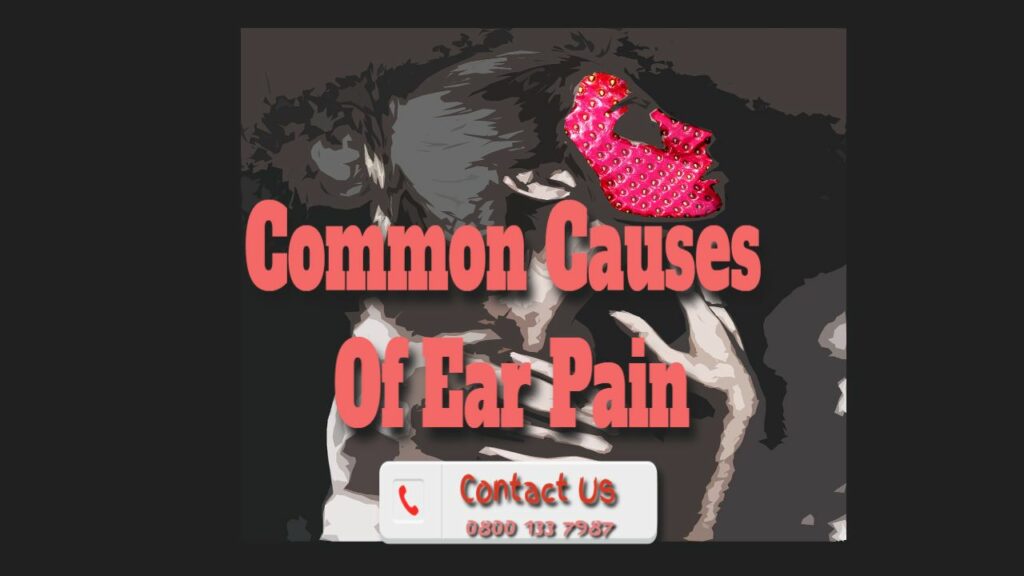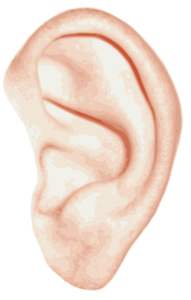What You Should Know About Earaches

What You Should Know About Earaches
What exactly are earaches?
Earaches are most common in youngsters, but they can occur in adults. Earaches can affect one or both ears, but they usually affect only one. They can be constant or intermittent, and the pain can be subtle, severe, or searing.
An ear infection can cause fever and temporary hearing loss. Young children with ear infections are frequently restless and cranky. They may also pull on their ears or rub them.
Continue reading to discover different symptoms, causes, treatments, and more.
Ear Pain Symptoms
Ear discomfort can be caused by ear infections or trauma. Adults may have the following symptoms:
Earache
Hearing impairment
Fluid oozing from the ear

Which of the following are the most common causes of ear pain?
An injury, infection, ear irritation, or transferred pain can cause ear pain. Pain felt in a location other than the infection, or wounded area is referred to as reference pain. Pain from the jaw or teeth, for example, maybe felt in the ear.
Ear pain can be caused by a variety of factors, including:
Infections of the ear can arise in the outer, middle, or inner ear.
Swimming, hearing aids or headphones that tear the skin in the ear canal, or pushing cotton swabs or fingers into the ear canal can all induce an outer ear infection.
Infection can occur if the skin in the ear canal is scratched or inflamed. The skin of the ear canal is softened by water making it a breeding ground for bacteria.
Illnesses induced by respiratory infections can cause middle ear infections. Bacteria can grow in the fluid that accumulates behind the eardrum due to these diseases.
Labyrinthitis is a disorder of the inner ear that is occasionally caused by viral or bacterial respiratory infections.
Other common reasons for ear discomfort include:
Changes in pressure, such as when flying in an aeroplane
earwax buildup
an ear infection caused by a foreign body
Throat infection
inflammation of the sinuses
Shampoo or water that has become lodged in the ear
Cotton swabs are used to clean the ears.
Causes of ear pain that are less common
TMJ (temporomandibular joint) syndrome
Eardrum perforation
Arthritis of the jaw
tooth infection
a tooth that is impacted
in the ear canal eczema
Trigeminal neuralgia (chronic pain of the facial nerve)
Earache treatment at home
There are various things you can do at home to ease earache. To reduce ear discomfort, try the following methods:
Apply a cool washcloth to the ear.
Try not to get your ear wet.
To reduce ear pressure, sit up straight.
Make use of over-the-counter ear drops.
Take over-the-counter pain medicines.
To ease stress, chew gum.
Ear discomfort medical therapy
If your symptoms improve, do not stop taking the medication. You must take all prescribed medication to ensure that the infection is entirely cleared up.
If earwax is causing your ear pain, you may be given ear drops that dissolve earwax. These may cause the earwax to fall out naturally. Your doctor may also use an ear wash to remove the earwax or suction equipment.
To reduce your ear pain, your doctor will treat TMJ, sinus infections, and other causes of ear discomfort immediately.
When should you see an Ear Specialist?
You should also contact a doctor right away if you are in excruciating pain that suddenly stops. This could be a symptom that your eardrum is about to rupture.
It would be beneficial if you also kept an eye out for any other symptoms. You should see an ear specialist if you have any of the following symptoms:
a lot of earaches
dizziness
excruciating headache
swelling around the ear
twitching of the facial muscles
Blood or pus discharge from the ear
If your ear discomfort intensifies or does not improve within 24 to 48 hours, you should contact a doctor.
Ear pain prevention
Some earaches are avoidable. Try the following preventative measures:
Do not smoke or inhale second-hand smoke.
Keep strange items away from your ear.
After swimming or bathing, dry your ears.
Avoid allergens such as pollen and dust.
Although swimming is frequently the cause, any interaction with water can cause water to accumulate in the ear canal. If this occurs, you may feel a tickling sensation in your ear. This discomfort could move to your jaw or neck. You may be unable to hear or hear just muffled sounds.
In most cases, the water will drain on its own. If not, the retained water might cause an ear infection. External ear infections, such as the swimmer’s ear, are a common problem for swimmers.
It’s not difficult to get the water out of your ear. These 12 pointers may be helpful.
Your Ear Canal Is Wet, Now What?
Water in your ear can be alleviated with the following home remedies:
Experiment with shaking your earlobe.
This first procedure will immediately remove the water from your ear.
Pull or wriggle your earlobe gently while tilting your head downward toward your shoulder.
You can also try swaying your head from side to side in this position.
Allow gravity to do its thing.
Gravity is intended to assist drain the water from your ear using this procedure.
Remove some of the water by lying on your side with your head supported by a towel for a few minutes. The water can gradually drain from the ear.
Make a vacuum.
This procedure creates a vacuum that can be used to extract the water.
Tilt your head to the side and rest your ear on your hand to form a tight seal.
Flatten your hand as you push, then cup it as you pull it back toward your ear in a fast motion.
Allow the water to flow out of your ear by tilting your head down.
Make use of a hairdryer
The heat from a hairdryer can assist in the evaporation of water in your ear canal.
The lowest heat setting on the hair dryer is recommended for best results.
Move the hairdryer back and forth about three feet from your ear.
Pull on your earlobe and let the warm air blow into your ear as you do this.
Hydrogen peroxide solutions can aid in the removal of debris and earwax that may be causing water to accumulate in the ear. Online retailers sell urea-hydrogen peroxide carbamide peroxide ear drops for removing earwax.
Use this approach only if none of the following requirements applies:
Pain, swelling, warmth, discharge, or bleeding from the ear are all symptoms of an injury or infection.
an infection in the middle ear
an eardrum perforation
Tubes for tympanostomy (eardrum tubes).
Consider using olive oil.
Olive oil can also aid in preventing ear infections and the removal of water from the ear.
Warm a tiny amount of olive oil in a small bowl. A few drops can be applied to your inner wrist to get a feel for the warmth.
Pour some oil into the ear using a clean pipette and allow it to soak in for around ten minutes.
Purchase olive oil online.
Experiment with additional water
Water can be removed from your ear with this method, despite the fact that it may seem counter-intuitive.
A clean dropper can be used to fill the problematic ear with water while you are lying on your side.
Wait five seconds before putting the afflicted ear down on the floor. All of the water should be gone.
Make use of over-the-counter drugs.
There is also a variety of over-the-counter ear drops available. Most are alcohol-based and can help dry up the outer ear canal, kill bacteria, and remove earwax and debris.
Brought To You By – Ear Wax removal Huntingdon





